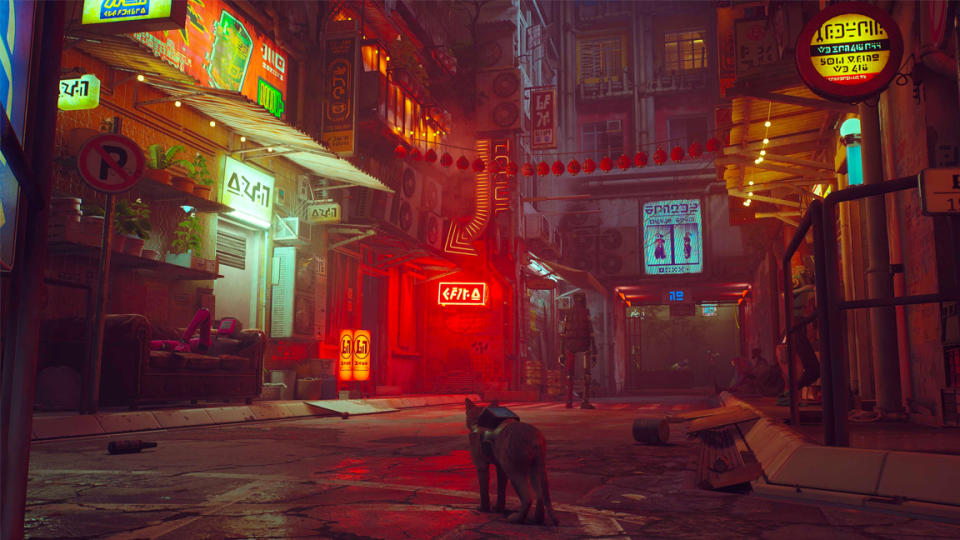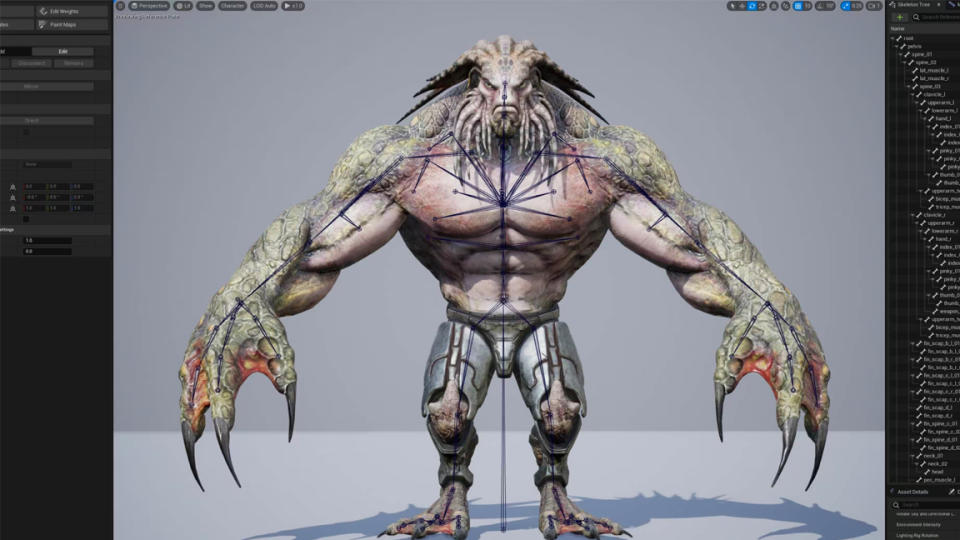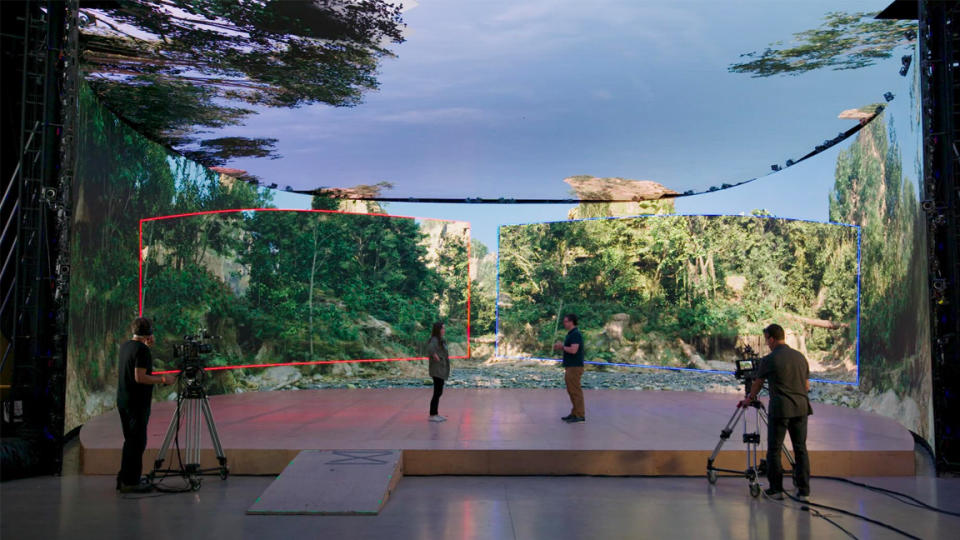Unreal Engine 5: everything you need to know

UE5: Quick Menu

Jump to the quick list↴
1. A brief history
2. What is it?
3. Who's it for?
4. Standout features
5. Must-know tools
6. Unreal Editor for Fortnite
7. The price
8. What do I need to run UE5?
FAQs
What is Unreal Engine 5, exactly? In this 'Unreal Engine explained' feature I'll do just that, explain all you need to know about Unreal Engine. The latest version, Unreal Engine 5.3, is powering everything from video games to films and visual effects; it seems there's very little creatives are finding this real time 'engine' can't do.
Unreal Engine is a real-time digital creation platform that can do everything and enable you to make game games, create visualisations, generate VFX and more. My Unreal Engine 5.3 review covers the latest release, while our comparison feature 'Unity versus Unreal Engine' looks at how it matches-up to the other big real-time engine, Unity.
Unreal Engine has become a staple of most digital art workflows and is still free for individuals and students; it remains incredibly popular. In this feature I'll explain what Unreal Engine is, what it can do and how to use it. I'll cover the main features and tools as well as the digital industries where Unreal Engine is dominant. If you just want to get started and try it for yourself, visit the Unreal Engine website and download the software.
If you want to see how Unreal Engine 5 is being used right now, read our RoboCop: Rogue City review, where a developer makes use of Lumen and Chaos destruction to good effect.
Unreal Engine: a brief history

Unreal Engine began life back in the early 1980s with a young boy by the name of Tim Sweeney. At the time, Sweeney had only just hit double digits but his fascination and love of programming was already taking centre stage in his life.
Around a decade later, in 1995, Sweeney began writing the code for what would become the gaming engine that enabled the creation of Unreal, a first-person shooter game for the PC.
In those early days, Unreal Engine was in direct competition with Quake Engine, developed by id Software. This fierce competition pushed the gaming industry forward in unprecedented ways and nearly three decades later has resulted in Unreal Engine becoming a powerhouse of code that is now used by game developers to create modern video games and visualisers to turn their designs into reality.
Epic Games states that 48% of next-gen games are now made using its Unreal Engine. That’s quite the market share and just goes to show how popular this engine is; we've covered some of the latest examples, such as in our Lords of the Fallen preview and how horror remake Layers of Fear made use of UE5 with startling results.
Unreal Engine 5: what is it?

What is Unreal Engine? Put simply, it's a real-time 3D creation platform developed by Epic Games and designed for a range of creative fields, including video game development, visualisation and VFX.
The 'engine' includes a powerful set of world-class tools that enable creatives to design virtual worlds and scenes, turning ideas into reality. The fact that this can be achieved without having to write any code makes it an incredibly accessible piece of software.
Unreal Engine 5: who's it for?

Unreal Engine began life as an engine for creating video games and now boasts the likes of Fortnite, Final Fantasy VII Remake and PlayerUnknown’s Battlegrounds. The flexibility and performance of latest version, Unreal Engine 5.3, means game developers from indies to AAA's can use the platform, meaning you'll have game's like Ninja Theory's Senua's Saga: Hellblade II creating realistic humans alongside the four-person team of Quantum Error.
Outside of games, Unreal Engine has also seen a growing interest in the TV and film industries, with Jon Favreau championing its use for the creation of virtual worlds for both The Lion King and The Mandalorian. This has led to a range of new features and developments that has made Unreal Engine an appealing prospect for a wide range of creators including 3D artists, animators, and VFX designers.
One new film technology developed using Unreal Engine is the LED Volume stage, a blend of a virtual and physical movie stage. We visited an LED Volume at SCAD in Atlanta, revealing how this new form of filmmaking is helping bridge the gap between traditional movie making techniques modern CG visual effects.
Some core industries that use Unreal Engine are listed below, and it's growing:
Video games Unreal Engine is for any team size, and importantly games made using these tools work across all formats, from PC to games consoles and even VR and AR.
Filmmaking Whether its Barbie or House of the Dragon, many studios are making use of Unreal Engine's real-time workflow to previs and film shows using LED Volume sets.
Architecture Easy to use and with stunning results, arch-viz has evolved into real-time using Unreal Engine, which can use files created in many 3D, CAD, and BIM apps.
Automotive Designers can create in VR and explore how cars perform before they've even been made; everything is faster with rapid virtual prototyping and new collaboration tools.
Broadcast and live TV Unreal Engine's real-time tools ensure live broadcasts look stunning; motion graphics, video walls, inserts and virtual sets are just some of the things that can be done.
Unreal Engine 5: standout features

Unreal Engine's strength comes from the powerful features it offers, from simulation effects using Niagara and virtual camera controls to animation rigging. The magic is how easy Unreal Engine makes these advanced features to use; this largely a 'no-programming' platform.
Photoreal ray tracing in real time Unreal Engine ships with an incredible physically based ray tracing engine. Lighting, reflections and shadows can be independently driven by the ray tracing technology. This does come at a hardware cost though as the calculations are understandably pretty intensive.
Character animation authoring Character rigs can be created easily with the Control Rig tool. These can then be posed and animated, all within Unreal Engine.
Simulation and effects Using Niagara particles you can create stunning water, smoke and other effects in real time; the Chaos disolver enables life-like destruction physics, flowing cloth and hair.
Virtual Camera system One of the emerging uses of Unreal Engine is for film and TV where it is now possible to control cameras inside the engine using an iPad Pro. This enables the compositing of live action and virtual worlds to be seamlessly brought together.
Robust multiplayer support Arguably Unreal Engine’s strongest feature is its multiplayer framework. The engine ships with a scalable client/server architecture that enables even the most demanding multiplayer functionality.
Unreal Engine 5: must-know tools
Unreal Engine includes an impressive set of tools and features that enable creatives from a wide range of industries to create according to their imagination. Some of the more general tools include modelling, texturing, lighting, texturing and rendering but alongside these there are a number of more significant and substantial features which are explored below.
Lumen

Lumen is Unreal Engine’s global illumination (GI) system which was released in version 5. GI is the name attributed to the process of simulating realistic lighting in a scene. This includes indirect lighting such as light bouncing and light bleeding. This functionality has only recently been added to Unreal Engine with the process of light baking being the only option previously available.
Artists familiar with offline rendering will be familiar with this type of lighting but the number of light bounces required and the subsequent mathematical calculations meant that real-time implementations weren’t possible.
The single biggest advantage of GI, in a games context, is that there is no need for light baking. This was always pretty much the most time-consuming and tedious part of any game designer's workflow and if you wanted to make any change to the lighting setup or arrangement then everything needed rebaking. Lumen changed all that overnight.
Version 5.3 recognises that some designers will still want to benefit from the high-performance nature of baked lighting but could still work with real-time reflections. This is where Lumen reflections have been introduced. Users can now use them even if they’re not using Lumen for global illumination. The fact that they now support multiple reflection bounces is an even bigger win.
Nanite

Another game-changing feature of Unreal Engine is Nanite, Unreal Engine’s level of detail (LOD) system. This ensures that detail is only rendered when absolutely necessary. Prior to Nanite, each LOD for a mesh would need to be hard-modelled in. The main downside to this was the sheer amount of time it took and problems would occur if any models were missed. Nanite took all of this off an artist’s plate and implemented it dynamically ‘on the fly’.
Recent versions of Unreal Engine have improved this feature further making it possible to now use Nanite with landscapes as well as the previously supported rocks, houses and similar. This means entire scenes can now be rendered dynamically rather than just specific parts of it. The evolution of Nanite is enabling designers to create high-quality meshes without compromising on the framerate.
MetaHumans

The introduction and increase of the metaverse has led to an explosion of development and possibilities for creating virtual humans. Epic Games’ offering is MetaHumans which enables the creation and animation of realistic digital humans for any Unreal Engine project.
Humans can be created with a minimal amount of character and animation knowledge and placed into games and scenes. When these are partnered with animation data such as mocap data, the characters take on a life of their own.
Temporal Super Resolution

One of the key considerations when experiencing real-time simulations such as games is the frames per second (fps) that it’s viewed at. Ordinarily, the higher the level of detail and quality of textures, the slower the frame rate. This can lead to an unhelpful trade off between the two.
Unreal Engine’s Temporal Super Resolution feature enables the engine to render at much lower resolution but with similar output pixel fidelity to frames rendered at a higher resolution. This makes it possible to achieve much higher levels of detail without compromising on the frame rates.
Unreal Engine 5: Unreal Editor for Fortnite

Fortnite is an online video game developed by Epic Games. First released in 2017, Fortnite has captured the imaginations of millions of gamers all around the world. Most games are created by a developer and contributors are picked to work on it.
Epic Games has opted for an alternative approach which lets creators design, develop and publish content into Fortnite. This is achievable through the Unreal Editor for Fortnite (UEFN). With this platform, a truly collaborative approach has been forged for the creation of assets and worlds.
In addition to this, through Fortnite Creative, it is also possible to build islands in Fortnite using their built in tools. Creators can build games and experiences to play with friends, or alternatively publish them to millions of Fortnite players.
Unreal Engine 5: the price

At the time of writing Unreal Engine is absolutely free. Only if your game earns over $1 million USD do you have to pay Epic Games a 5% royalty. By that point you’re cashing in on a pretty impressive amount of money so the small royalty won’t make too much of a dent in the overall earnings.
This will continue to be the case for game developers but not for those using Unreal Engine for 3D visualisation, VFX or animation. Read our update here on how and why Unreal Engine will no longer be free for all.
Speaking at Unreal Fest 2023, Epic Games CEO Tim Sweeney said Unreal Engine would become "a licensable piece of software like Maya or Photoshop" with a subscription-based pricing model. Studios using it for non-gaming work like animation, VFX and visualisation will be charged through a "seat-based enterprise software licensing model".
Unreal Engine 5: what do I need to run UE5?

Unreal Engine 5 system requirements
OS Windows 10 64-bit, macOS Monterey or higher
CPU Quad-core Intel or AMD, 2.5 GHz or faster
GPU DirectX 11 or 12 or Metal 1.2 compatible
Memory 8GB RAM
Unreal Engine has a huge range of complex and next-gen features. The required machine spec will largely depend on which of these features you plan on using. Some of the latest features such as ray tracing will require better GPUs compared to simpler scenes with baked lighting.
CPUs are vital for the smooth processing of your scenes. The latest generations of Intel and AMD CPUs will deliver excellent results and the more cores you have the faster the processing will be carried out.
A good GPU will ensure a smooth workflow and minimal lag when viewing scenes in the viewport. Two GPU features to look out for are the number of cores and the size of VRAM. The higher the number of cores and the larger the amount of VRAM, the more able you’ll be to handle graphically complex scenes and large textures. If ray tracing is important to your workflow then make sure you choose a GPU that supports it. NVIDIA cards are generally the best as they offer great driver support.
Unreal Engine 5: frequent questions
Is Unreal Engine 5 free?
You can download Unreal Engine 5.3 for free to create student and non-commercial projects. It's also free to create video games, with a 5% royalty paid when your game makes more than $1 million.
Why is Unreal Engine 5 so popular?
It's free to get started and experiment with but also incredibly powerful and versatile. But Unreal Engine 5 uses a modular system and Blueprint Visual Scripting setup to create scenes without needing programming knowledge.
Is Unreal Engine 5 good for beginners?
Unreal Engine 5's Blueprint Visual Scripting along with clear and detailed documentation, as well as an easy to understand UI, asset marketplace and regular video training, makes it a great platform for newcomers.
Can I make money using Unreal Engine 5?
Yes, outside of actually making video games, films and more you can earn money by selling assets on the Unreal Engine marketplace. The new Unreal Engine for Fortnite Editor also means you can now make and sell games inside Fortnite, one of the most popular free to play games.

